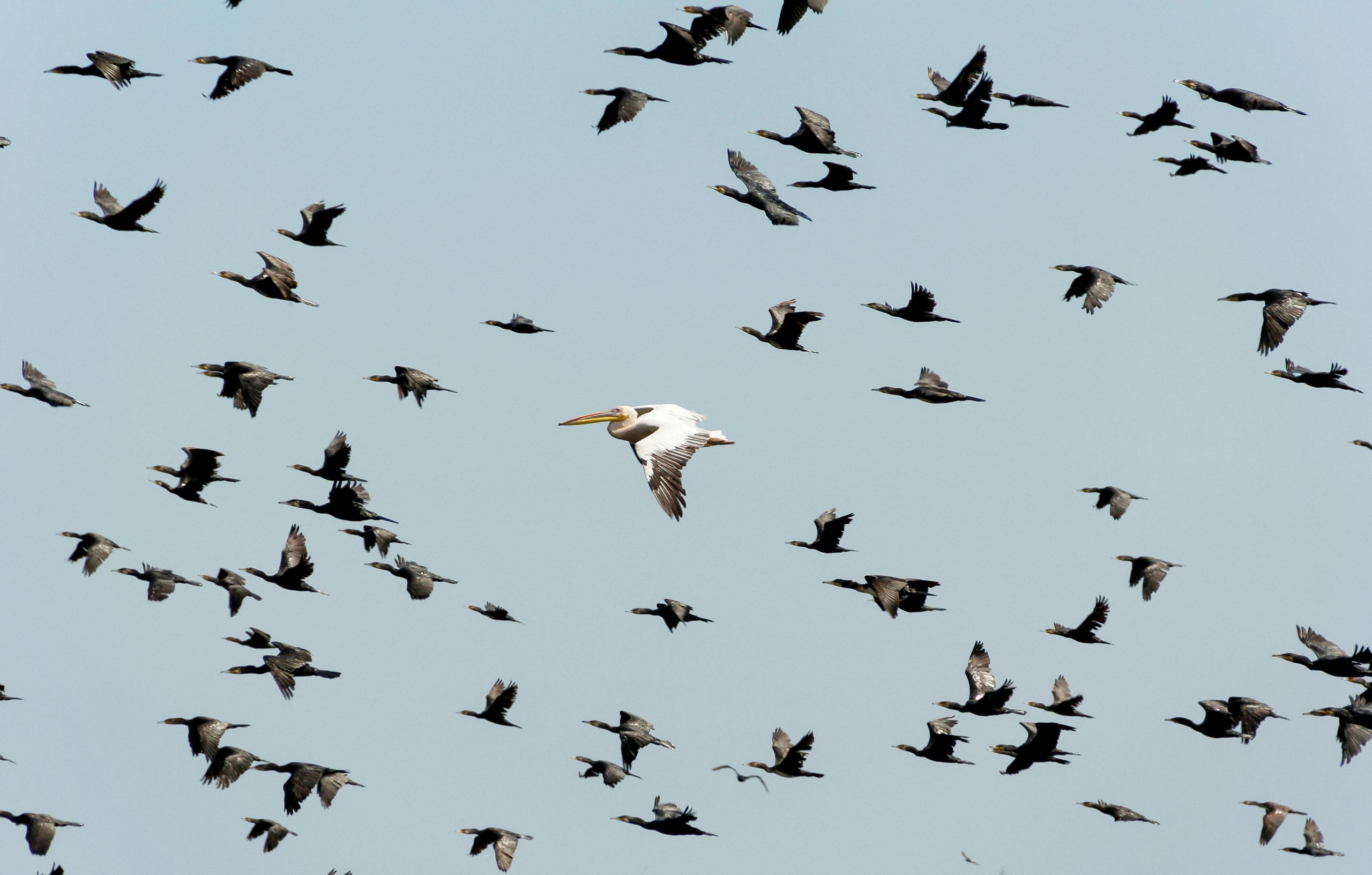Table of Contents
![]()
Introduction
Animal migration is a fascinating phenomenon that involves the large-scale, seasonal movement of species from one habitat to another. This behavior is crucial for survival and reproduction, playing a pivotal role in the ecological balance of various environments. By delving into the unique migration patterns of different animals, we can better understand the complex interplay between species and their habitats.
Terrestrial Mammals
Wildebeest Migration
The wildebeest migration, one of the most iconic and dramatic migrations, takes place in the Serengeti-Mara ecosystem. Every year, over a million wildebeest, along with zebras and gazelles, embark on a cyclical journey driven by the search for fresh grazing grounds. This migration spans approximately 1,800 miles and is characterized by the Great Migration, which sees herds traversing from the Serengeti in Tanzania to the Maasai Mara in Kenya. The migration has a profound impact on the ecosystem, influencing predator-prey dynamics and nutrient cycling.
Elephant Migration
Elephants, the largest terrestrial mammals, exhibit one of the most extensive migration patterns. African elephants can travel up to 60 miles a day in search of food and water, especially during dry seasons. Their migratory routes are often determined by the availability of resources and historical pathways used by their ancestors. This long-distance migration helps maintain ecological balance by creating clearings in dense forests and facilitating seed dispersal through their dung.
Bird Migration
Arctic Tern
The Arctic tern is renowned for its extraordinary migration, covering up to 44,000 miles annually. This bird travels from its breeding grounds in the Arctic to its wintering areas in the Antarctic, making it the longest migratory journey of any animal. Arctic terns use a combination of celestial navigation, the Earth’s magnetic field, and environmental cues to complete their journey. Their migration is essential for avoiding harsh Arctic winters and accessing abundant food resources in temperate and polar regions.
Swallows
Swallows, including species like the barn swallow, migrate between their breeding grounds in Europe and North America and their wintering territories in Africa and South America. Their migration is influenced by seasonal changes in temperature and food availability. Swallows exhibit remarkable endurance, flying thousands of miles to reach their destinations. During migration, they face challenges such as weather conditions and the availability of suitable resting sites.
Marine Migrations
Leatherback Sea Turtles
Leatherback sea turtles undertake remarkable migrations across oceans to nest on tropical beaches. They can travel more than 7,000 miles between their feeding grounds in temperate waters and their nesting sites in tropical regions. Their migration is guided by environmental cues such as water temperature and currents. This journey is vital for the continuation of their species, although it is increasingly threatened by habitat destruction and climate change.
Humpback Whales
Humpback whales migrate between feeding grounds in polar waters and breeding grounds in tropical or subtropical regions. Their migration can exceed 5,000 miles, and it involves complex social behaviors such as vocalizations and group coordination. These migrations are crucial for their reproductive success and survival, with whales using sophisticated echolocation to navigate and find prey.
Insect Migrations
Monarch Butterflies
Monarch butterflies are famous for their multi-generational migration, traveling from their breeding grounds in North America to their wintering sites in central Mexico. This migration covers up to 3,000 miles and involves several generations of butterflies. Monarchs face numerous challenges during their journey, including extreme weather and habitat loss. Conservation efforts are critical to preserving their migratory routes and wintering habitats.
Locust Swarms
Locusts, particularly the desert locust, can form massive swarms that migrate over long distances. These swarms can devastate crops and agricultural lands, making locust migration a significant concern for food security. Locust migration is triggered by environmental conditions such as drought followed by rapid vegetation growth. Understanding their migration patterns is crucial for predicting and managing swarms effectively.
Amphibian and Reptile Migrations
Salmon Migration
Salmon are known for their incredible life cycle migration, traveling from the ocean to freshwater rivers to spawn. This journey can cover thousands of miles, with salmon navigating back to their natal streams using a combination of environmental cues and memory. Their migration is vital for reproductive success and the survival of future generations. This remarkable journey also supports a wide range of predators and ecosystems.
Frog Migration
Frogs, such as the wood frog, exhibit breeding migrations that are closely tied to environmental cues such as temperature and rainfall. These migrations typically occur in the spring when frogs move from their wintering habitats to breeding ponds. The timing and success of these migrations are critical for the reproductive health of frog populations. Environmental changes and habitat destruction pose significant threats to their migratory patterns.
Challenges and Adaptations
Animal migrations face numerous challenges, including climate change, habitat destruction, and human activities. Alterations in climate can disrupt traditional migration patterns, affecting food availability and breeding success. Conservation efforts are essential to mitigate these impacts and preserve the intricate migratory behaviors of these species.
Conclusion
Unique animal migrations are a testament to the extraordinary adaptations and survival strategies of various species. Understanding these migrations not only highlights the ultimate complexity of animal behavior but also underscores the importance of conservation efforts to protect these vital processes. By studying and safeguarding migratory routes, we can ensure the continued health and balance of ecosystems worldwide.
Share This





Be the first to comment